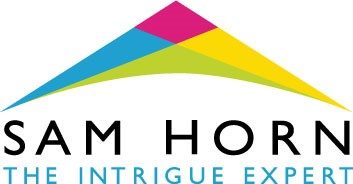Quick. Think of the last meeting, conference or pitch you attended.
Can you remember anything of what was said?
More importantly, can you repeat anything you heard – word for word?
If not, the messages in that meeting, conference and pitch are out-of-sight, out-of-mind.
If you’re a leader, speaker or entrepreneur, you don’t want to be out-of-sight, out-of-mind … you want to be top-of-mind.
Here is my 5-step process (excerpted from my new book Got Your Attention?) for crafting a memorable phrase-that-pays that ensures YOUR MESSAGE is the one people repeat and retweet.
What’s a Phrase That Pays?
First, you may be wondering, “What’s a phrase-that-pays?”
It’s an easy-to-repeat sound-bite that resonates. The word “resonate” means to “to have extended effect or impact beyond that which is apparent.”
That’s what you want. Instead of your message going in one ear and out the other, you want to give people a hook on which to hang a memory. A phrase-that-pays:
- Succinctly sums up your primary take-away – in eight words or less
- Distills the action you want people to take – the shift you want them to make
- Is catchy – so people choose to share it and take it viral
- Often works as an intriguing title that can be merchandized/monetized to create a financial ROI
How Can I Create a Memorable Phrase-That-Pays?
Step 1. Distill: Condense Your Primary Premise or Promise into Eight Words or Less
What do you want people to remember, feel, start or stop? If they did one thing differently as a result of your message, what do you want that to be? Condense that into a single sentence with a verb to prompt people to take the desired action. Follow author Elmore Leonard’s advice and “leave out the parts people skip.” You know it’s perfect when every word counts and you wouldn’t change a thing.
Step 2. Rhythm: Put It In a Beat So It’s Easy To Repeat
Think of your phase-that-pays as a jigsaw puzzle. At first, the words don’t fit. They feel and sound clunky. That’s why it’s important to talk out loud while experimenting with different combinations. If you keep playing with synonyms, the words will eventually fall into place and sound right. Say out loud, “If you see something, say something.” Feel how easily those words roll off the tongue? Keep playing with variations until your ears tell you you’ve found the perfect mix.
When you make it fun for people to repeat your message, they’re self-motivated to bring it to the attention of others which produces bottom-line results for you and your priority. This Week magazine reported the, “What happens in Las Vegas, stays in Las Vegas” slogan is “one of the most quoted and recognized ad campaigns in any industry,”and has generated billions of dollars in additional revenue. That’s just one example of how a phrase-that-pays can be a financial payoff for you and your organization.
Step 3: Alliteration: Use Words That Start with the Same Sound
Have you ever put one of those “cardboard insulating sleeves” around a hot cup of coffee so you didn’t burn your fingers? Entrepreneur Jay Sorenson saw an opportunity. He knew it’s hard to build a business around an unpronounceable name. So, he played with alliteration, came up with Java Jackets and cornered the market. In fact, Jay says, “Customers who meant to call our competitors call us because they can’t remember our competitors’ name.” Wouldn’t it be nice to have customers calling you? Increase the likelihood of that happening by creating a name/tagline with words that start with the same sound.
Step 4. Rhyme: Use Rhyme To Be Remembered Over Time
The U.S. government was concerned that the number of injuries from car accidents was increasing. So, they launched a public service campaign to convince people to wear their safety belts. Its name? Buckle Up for Safety. Yawn. No one noticed. No one cared. No one changed their behavior.
Back to the drawing board. Second time around, they incorporated rhyme and rhythm. Are you familiar with the iconic phrase, Click It or Ticket? That intriguing phrase not only got people’s attention, compliance went up and injuries went down. What does that prove? That a well-crafted phrase-that-pays isn’t silly word-play or semantics; it can change behavior for the better. I can even save lives.
Step 5. Pause and Punch: POP! Your Phrase-that-Pays with Distinctive Inflection
Be sure not to rush and blush when delivering your phrase-that-pays. People often race through high-stakes communications because they’re nervous. They’re sub-consciously trying to get the presentation or pitch “over with.” No one will even notice your phrase-that-pays if it gets buried in a barrage.
Arthur Levine, editor at Scholastic of J.K. Rowling (Harry Potter series) came up to me after I emceed a writers conference and said, “Sam, I like the way you speak. You put space around your words.”
When I coach clients on their presentations and pitches, we craft a phrase-that-pays for their big idea, and then rehearse them saying it with … space … around their words. They practice pausing so everyone is waiting for their phrase-that-pay … then delivering it … then pausing for three more seconds so people have time to absorb it and imprint it.
Want another way to POP! your phrase-that-pays? Spotlight it with one of these “highlight prefaces:”
- “The most surprising finding from our research was … .”
- “If you remember anything from my presentation today, I hope it’s this.”
- “You might want to write this down so you can share it with your staff ….”
- “The most important insight I’ve learned after ten years is …”
So, what’s a high-stakes communication you’ve got coming up? Have you already crafted a phrase-that-pays that people can repeat – and want to repeat – after hearing it once?
If so, good for you. If not, use this 5-step Phrase-That-Pays Process so that, during and after your program, you’ll be one they’re repeating and retweeting and taking viral.
– – – – –
Sam Horn, The Intrigue Expert and TEDx speaker, helps clients create quality, one-of-a-kind presentations, pitches, books and brands that scale their income and impact. These ideas are excerpted from Sam’s new bookGot Your Attention?which is endorsed by Dan Pink, Marshall Goldsmith, Keith Ferrazzi and Amy Wilkinson and is a Washington Post and Amazon bestseller.

